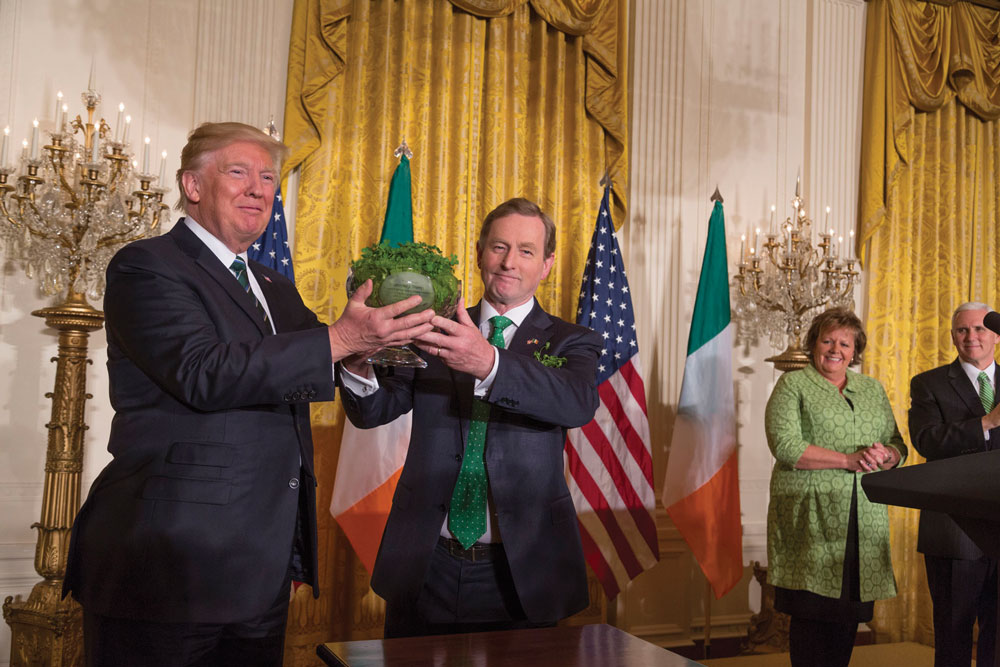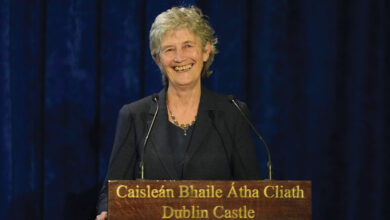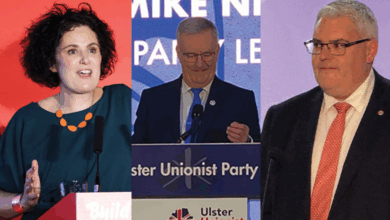Enda the road: long runs the fox


Enda Kenny, the longest serving office-holder of the current Oireachtas (the 12th longest in State history), has retired from his role as Taoiseach. Representing the people of Mayo since 12 November 1975, since his ascension to leadership in 2002, Kenny stood firm against internal Fine Gael pressure, guided the party to its greatest electoral success to date, before leaving the stage of his own accord.
Machiavelli tells us: ‘A prince must learn to act like both the fox and the lion: he must learn, like the fox, how to recognise the traps and, like the lion, how to frighten off wolves.’ Kenny exhibited this exact propensity.
Trained as a national school teacher, Kenny inherited his All-Ireland football medallist father Henry’s seat in a Mayo West by-election following the latter’s unsuccessful battle with cancer.
Aged 24, then the youngest member of the Dáil, a protracted career of almost 42 years beckoned. Like any good politician, the ingredients of his longevity have been tenacity, pragmatism and fortitude. It was here too, in Leinster House, that he met his wife Fionnuala, then a Fianna Fáil press officer.
At the outset, the man who was destined to become the fifth Fine Gael Taoiseach (excluding Cumann na nGaedheal’s William T Cosgrave), did not personify the qualities of a youthful and impatient visionary.
The true potency of his political intrigue and cunning lay in strength camouflaged as weakness alongside an adept ability to play a long game. Enda Kenny, scrutinised through the lens of cynicism traditionally applied to leaders and frequently dismissed as a minnow, has been perhaps one of the most consistently underestimated Irish politicians in recent decades.
Much like his father, from his initial foray into national politics he seemed content to languish among the backbenches, never betraying a sense of political ambition. It wasn’t until 1986, a decade later, that Kenny was appointed Minister of State in the departments of education and labour.
Following the collapse of the Fianna Fáil-Labour Government and formation of the ‘rainbow coalition’ in 1994, Kenny joined John Bruton’s cabinet as Minister for Tourism and Trade. Upon returning to opposition in 1997 and amid Bruton’s resignation as party leader in 2001, ‘also-ran’ Kenny found himself snubbed by successor Michael Noonan, who chose to deny him a spokesman’s brief.
In the following year, Fine Gael slumped to their most feeble electoral performance ever, prompting Noonan to concede control of the party. This time Kenny successfully wrested the vacant position. Given Fine Gael’s relatively weak standing, the role resembled a poisoned chalice.
When a 2010 Ipsos MRBI poll suggested that Labour had overtaken Fine Gael in popularity, Kenny’s leadership was called into question. After deputy leader Richard Bruton’s withdrawal of support, Kenny acted swiftly to oust him and tabled a motion of confidence in himself. Nine members of the opposition frontbench, including Simon Coveney, Denis Naughton, Leo Varadkar and Brian Hayes, indicated that they had no confidence. In the face of calls for resignation, Kenny held his cool, confronted the conspirators head-on and emerged victorious from the motion of confidence
In 2011, as Fianna Fáil reaped an electoral whirlwind, Fine Gael emerged from the economic mire as the largest Dáil party for the first time, securing an unparalleled total of 76 seats, though a Labour surge deprived it of an unprecedented overall majority. Predisposed to keeping enemies close, Kenny had reasserted his authority following the botched coup d’état in 2010 and now beckoned the mutineers (Bruton, Coveney and Varadkar) back into the cabinet of the Government of the 31st Dáil. Amid “a democratic revolution”, the subsequent coalition guaranteed the Government the largest majority in the history of the State.
Later that year, Enda Kenny became the first Taoiseach to directly and publicly challenge the Catholic Church when he unleashed a ferocious rebuke of the Vatican for its history of secrecy and complicity in the obstruction of an investigation into sexual abuse in Diocese of Cloyne. The “historical relationship between Church and State in Ireland,” Kenny concluded, “could not be the same again”.
Again shedding the traditional rural/conservative disposition, Kenny espoused an empathetic pragmatism at several crucial junctures, including his vocal support for marriage equality and an emotionally charged and humbling apology to the women formerly confined to Magdalene laundries.
“To all my friends I leave kind thoughts, to others I express my fullest forgiveness and to Ireland my undying prayer for absolute freedom and independence.”
He subsequently made a televised national address, only the sixth occasion in which a Taoiseach had done so. In the address, Kenny forewarned that the gravity of the economic situation necessitated Budget 2012 be swingeing. By December 2013, he again addressed the nation amid Ireland’s exit from the EU-IMF bailout and asserted: “It is now clear that your sacrifices are making a real difference. Ireland is now moving in the right direction. Our economy is starting to recover.”
Despite the green shoots of recovery, in the wake of the 2016 general election, it became clear that Fine Gael had squandered its majority and a hung Dáil beckoned. After 70 days and several attempts, Kenny emerged both as the figurehead of the first minority government of its kind and as the first Fine Gael leader to be returned as Taoiseach for a successive term.
Like any good pragmatist, in the face of adversity and abject deflation, Kenny unashamedly transgressed atavistic boundaries and made an attempt to secure a grand coalition with the Soldiers of Destiny. Though spurned, a confidence and supply agreement was eventually reached and the support of independents tenuously procured, enabling the Fine Gael government to hobble on.
In what became a globally renowned feature of his closing acts as Taoiseach, on the eve of St Patrick’s Day 2017, Kenny visited Washington DC and delivered a rousing speech on immigration in the presence of US President Donald Trump. “Four decades before Lady Liberty lifted her lamp, we were the wretched refuse on the teeming shore,” he declared. “We believed in the shelter of America, in the compassion of America, in the opportunity of America. We came and became Americans.”
Internationally, the former Taoiseach is well regarded, especially among European leaders. Upon his retirement, in a letter signed-off with kisses, European Commission President Jean-Claude Juncker wrote to say: “Over the last six years, you have steered Ireland to a remarkable and robust economic recovery, often necessitating difficult policy decisions. Throughout this time, Ireland has remained a committed and valued member of the European Union, due in no small part to your political leadership.”
On the day of his resignation, paraphrasing Mayo compatriot Michael Davitt in the Dáil, Kenny stated: “To all my friends I leave kind thoughts, to others I express my fullest forgiveness and to Ireland my undying prayer for absolute freedom and independence, which it has always been my ambition to achieve for her. I hope that in the two governments I have led; we have made a modest contribution towards that ambition.”
However, as the mantle is passed to Leo Varadkar, Kenny also leaves a behind a veritable train wreck of Garda controversy, an asymmetrical and Dublin-centric economic recovery, housing failures and a deepening health crisis. His legacy may well yet be determined by tomorrow’s historians.





